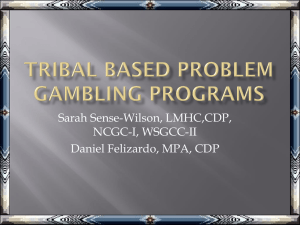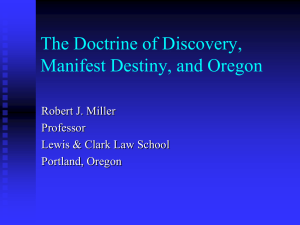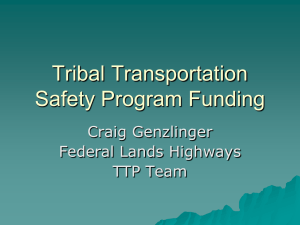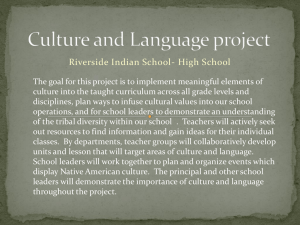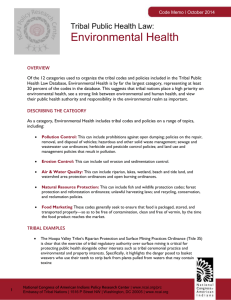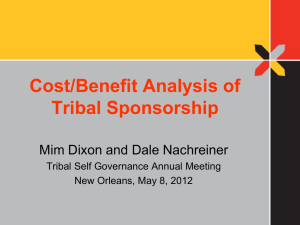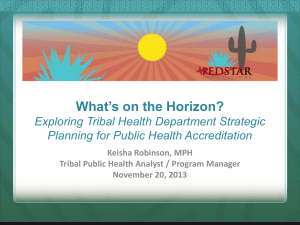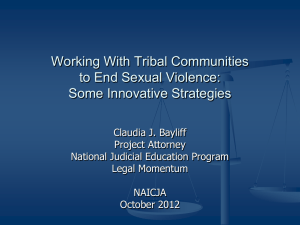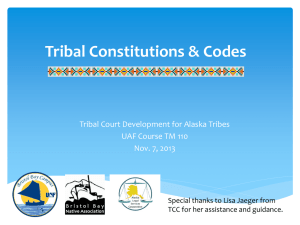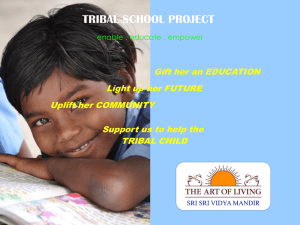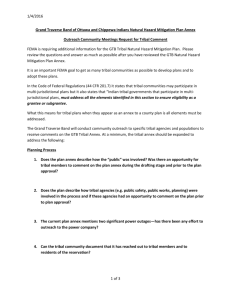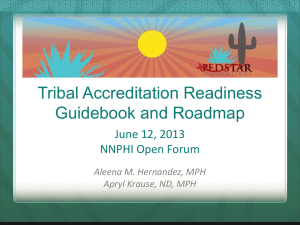PPT - Academy for Professional Excellence
advertisement
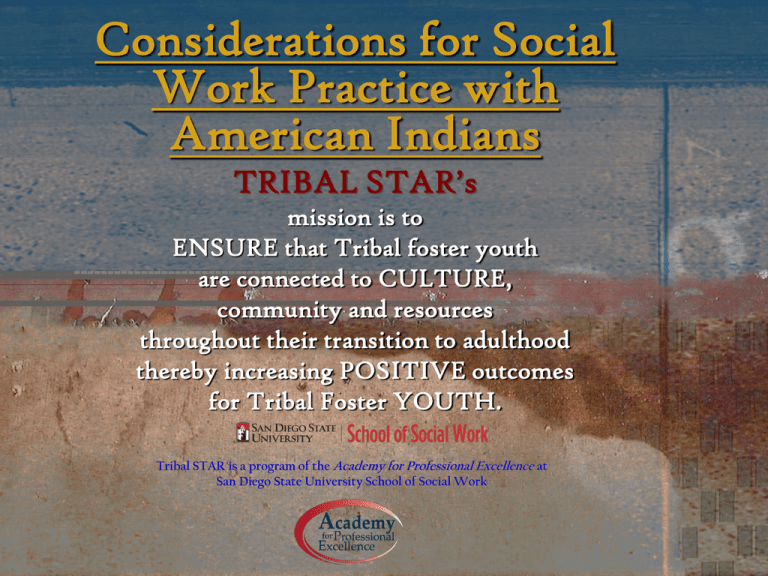
Considerations for Social Work Practice with American Indians TRIBAL STAR’s mission is to ENSURE that Tribal foster youth are connected to CULTURE, community and resources throughout their transition to adulthood thereby increasing POSITIVE outcomes for Tribal Foster YOUTH. Tribal STAR is a program of the Academy for Professional Excellence at San Diego State University School of Social Work History & Purpose of Tribal STAR • Who we are & where we are from Landscape of California • CA has the largest Native American population in the nation (333,511 / 2000 Census, US Census Bureau / www.nahc.ca.gov) • CA is the State with the largest number of foster youth • 35% of Tribal youth experience out of home placement (more than any other racial group) Culture 1 a: the integrated pattern of human knowledge, belief, and behavior that depends upon the capacity for learning and transmitting knowledge to succeeding generations b: the customary beliefs, social forms, and material traits of a racial, religious, or social group; also: the characteristic features of everyday existence c: the set of shared attitudes, values, goals, and practices that characterizes an institution or organization What cultures are in the room? - Adaptive Behavior When did you know you were an outsider? -what was your culture and what was theirs? -how did it feel? -how did you adapt yourself? -how do we adapt ourselves when working with people from other cultures? Traditional Indian Values vs. All American Mainstream Values Clan/communal emphasis Sharing Present-time orientation Spiritualistic Time non-awareness Harmony with nature Passive Giving/spending Appreciates/honors silence Respect of other religions Individual Emphasis Winning Future Orientation Materialistic Time awareness Conquest of nature Aggressive Acquiring/saving Avoids silence Converting/proselytizing (Source: The Indian Child Welfare Act, Handbook by Rose-Margaret Orrantia; Cultural Awareness; the Indian Perspective, Marilyn Robinson). Resiliency Factors Events to consider as important -naming ceremonies -sweat lodge & other purification ceremonies -sundance & other renewal ceremonies -end of life services, wakes, burials -end of cycle after death ceremonies The Importance of Introductions RECOMMENDATIONS FOR DEVELOPING AND MAINTAINING TRIBAL RELATIONSHIPS • Creativity –unique welfare and Social issues combined with a distinct lack of precedent in collaboration demand a high amount of creativity in each stage of relationship development • Patience- introduction is extremely important. It is also important to allow time for broad introductions of many Tribal members • Preparation and Planning – research the particular Tribes and Tribal cultures in a respectful way, knowing Tribal leaders names, governing structures. • Respect – sincere respect. It is crucial to be aware of the “Head of State” status that the Chief or Governor of the Tribe has. Native American women, people, and Tribes are the experts on their own lives. The goal is “to listen, understand, and learn to help.” Who to Contact First? Personal phone call – then a letter and email to the nearest ICWA rep or Tribal contact. Questions: • Is there anyone in the community that has a special interest in the needs of tribal foster youth? • Who do people go to for advice in working with tribal foster youth and young adults? • Who at the health center is working with ICWA and can assist identifying tribal youth eligible for IL services? • Who should I contact at the tribal council about our project and what is the best way to approach them? Develop contacts and become familiar with your local tribe. You may give a presentation at the local tribal council meeting. Be brief and keep tribal youth at the center of your presentation. Solicit support, input and guidance. What If I’m NOT Native? • Learn as much as you can about the local tribe(s), especially their history and relationship with federal and state programs. • Take the time to learn about the key tribal organizations. • Show that you are committed to being part of the community: attend community functions (fiestas, pow wows, cultural gatherings, health fairs, etc.). “Humankind has not woven the Web of Life. We are but one thread within it. Whatever we do to the web, we do to ourselves. All things are bound together. All things connect.” -Chief Seattle-




